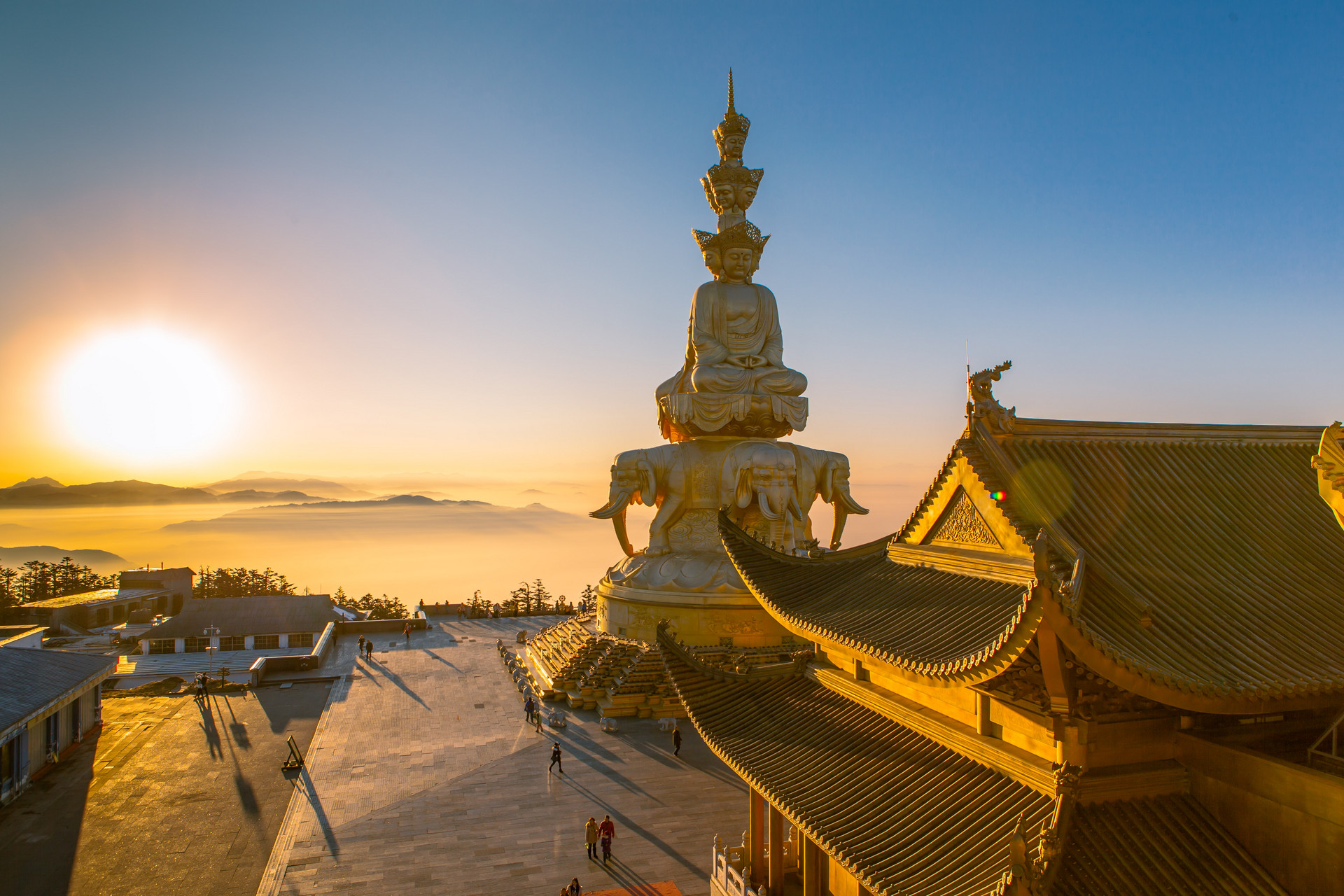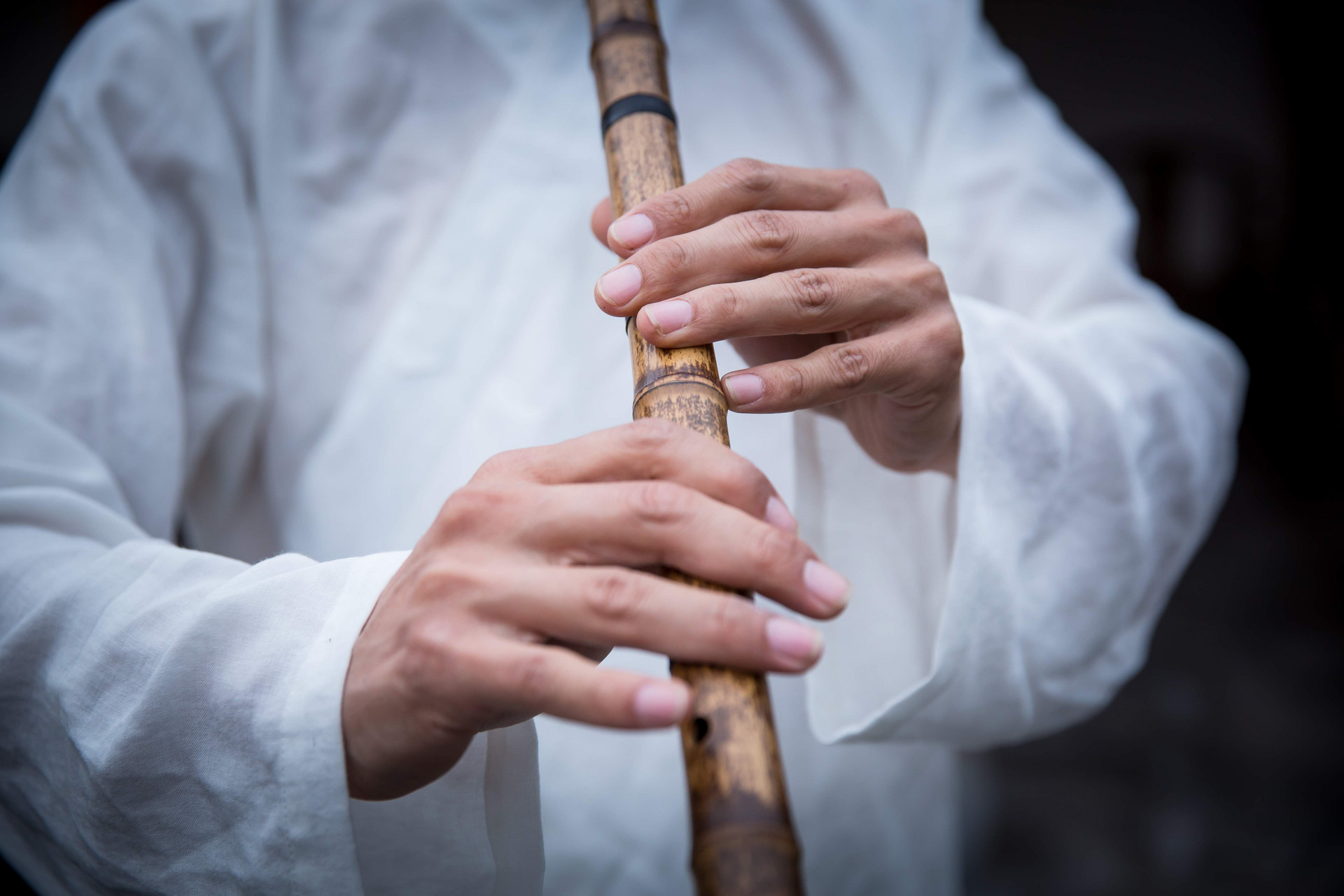七十二峰雪滿山
危乎高哉列千關
鐵馬重裘難為進
到此仰呼行路難
何代仙人開鳥道
往來天都一日還
上有奇松出雲海
下有九龍探百川
墨花點破太白筆
道場曾煉軒轅丹
梵天擲下青蓮座
光明之頂不可攀
半空俯仰壯心目
上下泱漭若渾涵
元氣磅礴萬萬古
始知乾坤有大觀
注釋:
①七十二峰雪滿山:黃山七十二峰
②往來天都一日還:三大主峰之天都峰
③上有奇松出雲海:黃山四絶之一奇松
④下有九龍探百川:黃山三大名瀑之「九龍瀑」
⑤墨花點破太白筆:黃山奇峰「夢筆生花」傳為太白之筆化成
⑥道場曾煉軒轅丹:黃山傳為軒轅黃帝煉丹處,故稱黃山
⑦梵天擲下青蓮座:三大主峰之蓮花峰
⑧光明之頂不可攀:三大主峰之光明頂
Over seventy summits, mapped and named, obscured by snow.
Vastly high, to rising sky, lined up, a thousand passes!
Weaponed suits, in furs, on armoured horse—no easy passes—
Battled armies halt: So huge their ride! How far to go!?
Which immortals built those paths where only birds can fly?
So high, so far away, yet reachable in just a day.
Life-affirming, miracle pines peak over clouds’ seas’ sway.
Nine Dragon Waterfall(2) dashed to a hundred rivers—Li Bai(3):
Brush pen flourished into Dream Flower Pen(4), a tree-soft point.
Yellow Emperor(5) made dan inside this Taoist sphere.
Full of beauty—is this Buddha’s lotus seat(6) spread here?
Brightness Apex(7), it’s impossible to get to the point.
Half way to heaven, heart-vast, up-down, majestic, vision not finite,
No limit, far, inside, vast, unseen but known, profound—
Base Earth energy running millions of years unbound,
Only being here I now know the universe’s light.
Translated by Jennifer Zeng and Damian Robin
Footnotes:
1. Huangshan: https://en.wikipedia.org/wiki/Huangshan(Chinese: 黄山, literal meaning: Yellow Mountain) is a mountain range in southern Anhui Province in eastern China. Vegetation on the range is thickest below 1,100 meters (3,600 ft), with trees growing up to the tree line at 1,800 meters (5,900 ft). The area is well known for its scenery, sunsets, peculiarly-shaped granite peaks, Huangshan pine trees, hot springs, winter snow, and views of the clouds from above. Huangshan is a frequent subject of traditional Chinese paintings and literature, as well as modern photography. It is a UNESCO World Heritage Site, and one of China's major tourist destinations.
2. The Nine Dragon Waterfall is one of the three most famous waterfalls in Huangshan.
3. Li Bai (701–762) was a Chinese poet acclaimed from his own day to the present as a genius and romantic figure who took traditional poetic forms to new heights. He is regarded by many as the greatest poet in Chinese history.
4. Dream Flower Pen (Meng Bi Sheng Hua) is located within northeast of Yellow Mountain and close to the Bijia Peak. The elevation is 1,640 meters. A stone stands elevated with a round bottom cuspate top, like a brush pen used for calligraphy. Legend has it that once Li Bai dreamed that flowers blossomed on top of his brush. There is also another story that when Li Bai once visited Mount Huangshan, he was invited by a monk to write a poem. After he finished writing, everyone was so amazed by his calligraphy and poem. In his excitement (not without drinking some rice wine produced and provided by the monks), Li Bai threw away his brush which turned into a peak of Huangshan which is now called "夢筆生花Meng Bi Sheng Hua", or "Dream Flower Pen", meaning the brush blossomed in a dream. "Meng Bi Sheng Hua" also evolved into a Chinese idiom referring to very talented writers or writings.
5. Legend has it that once the Yellow Emperor made his elixir, or dan, on Mount Huangshan. Huang means yellow, Shan means mountain. That's how Mount Huangshan (Yellow Mountain) gained its name: It was named after the Yellow Emperor (Huang Di). The Yellow Emperor was
one of Three Sovereigns and Five Emperors in ancient China, living some 5000 years ago. He was believed to have succeeded in cultivation, become an immortal and rose to heaven on a dragon. Chinese people now call themselves "descendants of the Yellow Emperor".
6. Lotus Peak is one of the three main peaks of Huangshan. Buddhas are believed to sit on lotus petals (like a seat).
7. The Bright Peak is one of the three main peaks of Huangshan.






















